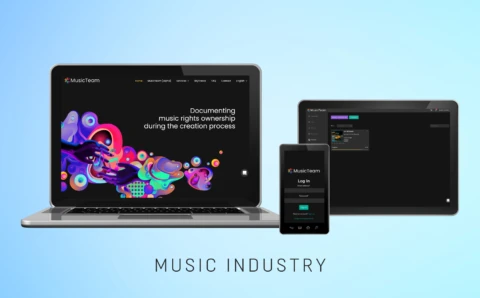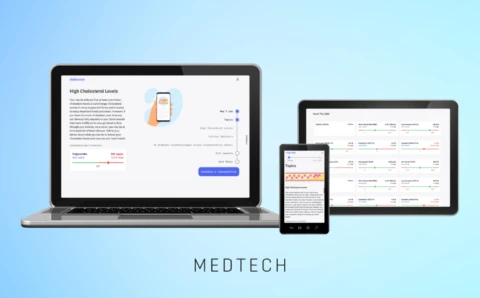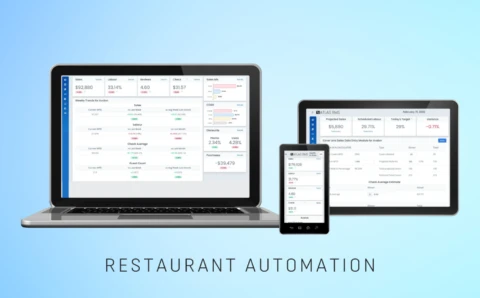
Microservices offer an efficient approach to building flexible architecture, ensuring scalability, modularity, and top-tier performance in software development. Essentially, they refer to turning monolithic applications into smaller, standalone services, which provide higher agility, streamline maintenance, and accelerate deployment timelines. The microservices industry is in steady progress. A Gartner report indicates that nearly 74% of organizations have adopted microservices architecture, with an additional 39% planning to do so.
Among the technologies often used for microservices development services, Python has solidified itself as an excellent choice due to its clean syntax, robust library support, and flexibility. The benefits it offers are clean syntax, robust library support, and flexibility. However, this programming language’s absolute potential can be gained only when you select the framework that aligns with your project’s goals as closely as possible.
Offering both lightweight solutions for quick builds and powerful tools for complex systems, Python provides a variety of frameworks tailored for microservices. Choosing the right one directly establishes your project’s performance, scalability, and development speed.
In this article, we’ll explore the seven best Python frameworks for microservices, covering their distinctive features and helping you determine which is best suited for your project case.
Table of Contents:
Key Features to Look for in a Python Framework for Microservices
A suitable Python framework for microservices should fulfill the core functions – optimizing development while enhancing scalability, maintainability, and integration. Microservices require agility, efficient communication, and reliability at scale, and the right tool can make all the difference. Let’s discover the key features to look for when choosing the frameworks of Python for microservices.
Lightweight and Fast
Microservices provide solid efficiency, particularly in large-scale deployments where performance and resource management are prioritized. A framework must be lightweight to minimize overhead, ensuring your services perform optimally without unnecessary bloat. Efficiency is essential when running hundreds or even thousands of individual services. This approach aligns perfectly with what frameworks like Flask and FastAPI offer, as they provide a concise and performance-focused architecture – perfectly suited for managing a vast number of individual services. These tools can help build services faster while keeping resource consumption low. Furthermore, when your microservices start growing, an easy-to-scale framework provides a solid foundation without overburdening system resources.
Besides, microservices often require fast response times to facilitate a seamless user experience. Due to this fact, you should opt for a fast framework that ensures API responses are delivered efficiently, even when it comes to handling high volumes of requests. Put in practice, FastAPI is designed for high performance, employing asynchronous programming to execute several concurrent requests, which minimizes latency and boosts throughput.
Easy Integration with Other Services
In a microservices architecture, each service needs to communicate with databases, message brokers, APIs, and other third-party solutions. Such a level of interaction necessitates smooth integration capabilities with inalienable tools such as RabbitMQ, Kafka, PostgreSQL, Redis and cloud services like Amazon Web Services (AWS) or Azure. The framework must provide built-in libraries, drivers, or straightforward mechanisms to provide seamless connectivity.
A suitable microservices framework should be able to establish easy data exchange between services, liquidating the complexities of managing multiple custom integrations. In this case, libraries Celery for task queuing, SQLAlchemy for database connections, or Pydantic for data validation will be a great fit. These can significantly reduce the amount of boilerplate code and put integration efficiency to the next level. An intuitive integration mechanism supports rapid development and minimizes the risk of integration errors that may be the potential reasons for system failures.
Built-in Support for RESTful APIs or gRPC
Communication is the base of any microservices architecture. Whether your architecture relies on RESTful APIs or gRPC (Google’s high-performance remote procedure call framework), the framework should offer robust support for creating and managing these interfaces. RESTful APIs have long been the standard for microservices, and tools such as Flask, Django REST Framework, and FastAPI allow you to swiftly define API endpoints, handle requests, and manage data serialization effectively.
gRPC is also employed for microservices since it can deliver faster communication via binary protocol and embedded support for multiplexing several requests over a single connection. If your microservices require fast, effective, and instant communication, a framework with gRPC support like FastAPI or Tornado will significantly benefit your project. The framework should simplify the creation of APIs, optimizing the process of data transmission between services in a standardized format.
Scalability and Performance
Microservices applications grow in parallel with the demand for scalability and high performance. A framework fine-tuned for scalability will allow you to scale individual services horizontally, distributing the load across several instances or servers. In these terms, scalability ensures that as your service grows in terms of traffic, the framework can handle the increased load without compromising on performance. FastAPI excels in both performance and scalability. With its asynchronous nature and lightweight design, it integrates seamlessly into scalable architectures, enabling efficient horizontal scaling to handle growing traffic without compromising on performance.
Performance is equally integral to thinking over. Efficient microservices are expected to cope with high traffic levels while demonstrating low response times and resource consumption. Asynchronous programming can be an optimal strategy for improving performance in applications that handle multiple tasks simultaneously. Frameworks like the aforementioned FastAPI, which provide built-in asynchronous support, excellently cater to high-traffic environments. Asynchronous processing allows your services to handle multiple requests concurrently rather than blocking threads, which speeds up response times and allows for more efficient resource allocation.
Moreover, frameworks with built-in support for concurrency and parallelism can elevate the performance of microservices, specifically when there is a case requiring real-time updates or data streaming. Being able to complete millions of requests per second is a must for microservices supporting high-demand applications, such as e-commerce, financial platforms, or social media networks.
Clear Documentation and Active Community Support
Good-quality documentation is an integral lifeline that provides guidance and support for software engineers. It ensures you can navigate the framework’s features and address issues effectively without wasting time deciphering obscure tutorials or relying on trial and error. Clear, concise, and thorough documentation should be available, providing you with tutorials, guides, and best practices for common tasks like setting up routes, handling errors, or integrating with external services.
Scale Your Business with Ease
Discover our Microservices development offer to scale your business efficiently with global experts.
Furthermore, an active community is a sign to look for when choosing the best Python framework for microservices. Tech enthusiasts can provide valuable support in the form of training, forums, plugins, or even open-source contributions that accelerate development. Frameworks like Django and Flask have well-formed communities that can equip you with various resources and help you get started much faster, troubleshooting any consequent issues. An active ecosystem can lead to faster development cycles and fewer roadblocks when it comes to implementing complex features or eliminating common challenges. Active repositories, consistent releases, and community-driven enhancements are signs of a framework’s long-term viability and growth.
Top Python Frameworks for Microservices
The proper decision guarantees a balanced performance, scalability, and seamless development. The following frameworks offer a diversity of strengths that are perfect for different project needs. Below, we’ll investigate the peculiarities and features, helping you opt for the best framework for your microservices Python development.
Flask
Flask is a minimalist framework that ensures technicians have the bare essentials needed to build web services. Its simplicity and flexibility perfectly cater to small-scale microservices. Flask is unopinionated, implying it doesn’t enforce a specific way of structuring your code. Its flexibility is ideal for developers who need to build custom solutions from scratch or seek absolute control over the design. Nonetheless, its lightweight concept has some limitations as well; developers often need to rely on external libraries for advanced features like authentication, database management, or asynchronous support. You can hire Flask developers to bypass these obstacles, get maximum tailored architectures, seamlessly integrate advanced functionalities, and get a flawless, secure, and production-ready solution.
FastAPI
FastAPI is a modern framework with a focus on high performance and developer productivity. Designed to employ Python-type hints, it automatically generates detailed API documentation with OpenAPI standards, making the development flow significantly more straightforward and streamlined. FastAPI also natively supports asynchronous programming, which is important for high-traffic microservices requiring stable and failure-free performance. It’s significant to note that FastAPI is slightly more complicated to learn than Flask, especially for newbies. Yet, it has an intuitive design and powerful features that can compensate for the initial learning curve in the long run. FastAPI development services are often applied for scalable APIs and services, particularly when talking about projects where data validation, concurrency, and real-time performance are the core priorities.
Django
Django is a heavyweight among Python frameworks, comprising a comprehensive feature set and “batteries-included” philosophy. It comes with a built-in instrumental kit for ORM, authentication, admin interfaces, and security, fulfilling the needs of sophisticated and large-scale applications. Its structured design ensures IT experts adhere to tried-and-true practices, decreasing the probability of errors in production. While Django can be overkill for lightweight microservices, it shows its full potential when implementing systems requiring powerful functionality and stringent security. Nonetheless, its complexity and heavier resource requirements may become challenging for developers aiming to create concise or highly modular services. To successfully leverage Django’s capabilities, consider partnering with a professional Django development company that will provide expert guidance and use the framework’s full potential. It’s a guaranteed way to get an efficient, scalable, and relevant software solution reflecting your business requirements.
Tornado
Tornado stands out for its emphasis on asynchronous networking, delivering value in scenarios where real-time updates are required, such as chat applications or live dashboards. Its non-blocking I/O design allows it to handle thousands of open connections, excellently supporting event-driven architectures. Mentioning its pros and cons, Tornado offers high performance, but it demands more advanced knowledge, which may be an issue for developers not acquainted with asynchronous programming paradigms. Besides, it has a smaller ecosystem and limited third-party tools, meaning developers must often implement features manually. Considering the pros and cons, Tornado’s performance can be highly efficient for real-time microservices.
AIOHTTP
AIOHTTP is built around Python’s asyncio library, ensuring seamless support for asynchronous programming. It’s an excellent option for services needing extensive async handling, such as streaming or long-polling operations. AIOHTTP supports both server and client-side functionality, being highly versatile for various use cases. However, it has a less mature ecosystem and a smaller community compared to Flask or Django. This aspect can present hurdles for developers requiring pre-built solutions or extensive documentation. That said, its flexibility and efficiency can become a go-to for developers comfortable navigating lower-level configurations.
Sanic
Sanic is purposefully designed for asynchronous programming, enhancing speed and efficiency. It supports WebSockets out of the box, making a natural match with applications requiring real-time communication. Undoubtedly, Sanic is one of the fastest frameworks available, but it may be limited because of its smaller ecosystem and less extensive documentation compared to more established frameworks like Flask or Django. Software engineers adopting Sanic should be prepared to build or customize certain features themselves. Regardless of the stated disadvantages, it demonstrates high speed and provides modern async capabilities, which can come in use for performance-critical microservices.
Let’s sum up our comparison with an in-depth table describing the strengths and trade-offs of each Python microservices framework. In a nutshell, we highly suggest you select the right one depending on your specific project requirements, development team expertise, and scalability needs.
| Framework | Type | Best Use Case | Pros | Cons |
| Flask | Minimalist | Small, custom microservices | Lightweight, flexible | Requires external libraries |
| FastAPI | Modern/Async | High-performance APIs | Async support, auto-docs | Steeper learning curve |
| Django | Full-featured | Large, complex systems | Comprehensive, secure | Heavy, overkill for simple apps |
| Tornado | Async/Real-time | Event-driven architectures | High performance, real-time focus | Small ecosystem, steep learning curve |
| AIOHTTP | Async | Async-intensive projects | Versatile, efficient | Less community support |
| Sanic | Async/Fast | Performance-critical systems | Speed, WebSocket support | Limited ecosystem, smaller community |
Factors to Consider When Choosing a Python Framework for Microservices
With such a spectrum of options available, it’s essential to weigh specific factors that align with your application’s needs and the team’s expertise. Now, we’ll proceed to explore the essential considerations and guide your decision-making process.
Size and Complexity of the Application
The scale and complexity of your application play a significant part in framework selection. For small, lightweight services, minimalist frameworks like Flask or FastAPI may suffice, reflecting these needs with simplicity and flexibility. Such frameworks allow developers to accelerate the implementation and deployment of services without excessive overhead.
Conversely, for large, complex products requiring features like authentication, ORM, and admin interfaces, Django can become your best framework for microservices in Python. As was mentioned before, it follows a “batteries-included” approach that provides a solid suite of tools to handle intricate business logic and database interactions seamlessly. Tornado and Sanic, though not that feature-rich, are perfect choices for specific use cases such as real-time communication or event-driven architectures.
Performance Requirements
Needless to say, performance is a critical factor for microservices, especially in systems requiring low-latency responses or dealing with high traffic loads. Frameworks like FastAPI, Tornado, and Sanic stand out for their performance capabilities. FastAPI supports asynchronous programming and type validation, providing high efficiency in data-driven applications. Tornado and Sanic, in turn, can handle numerous concurrent connections for real-time services.
In the cases where performance isn’t a top priority, frameworks like Flask and Django can be equally effective, especially for services where ease of development and feature completeness outweigh raw speed.
Development Speed and Ease of Use
For many projects, especially those with tight deadlines, frameworks that prioritize convenience and rapid development are invaluable. Flask is a prime illustration, offering a simple, unopinionated design that enables developers to quickly spin up services. Similarly, FastAPI’s automatic API documentation generation and type-based validation tangibly boost development while reducing failures.
Django, while relatively more complex, facilitates rapid development for larger solutions by covering embedded tools for common tasks such as user authentication, database management, and form handling. The structured approach of this framework also integrates time-tested practices, which can save time in the long run by taking debugging and maintenance efforts from developers’ shoulders.
Community and Documentation Support
A robust community and comprehensive documentation provide all conditions for effective troubleshooting, learning, and further extending your application. Flask and Django lead the pack in this regard, introducing large, active communities and extensive resources. FastAPI, though “younger,” already has excellent documentation alongside an engaged developer community.
Frameworks like Tornado, Sanic, and AIOHTTP are powerful but have smaller communities. For less experienced developers or teams seeking quick solutions to uncommon problems, this aspect may be critical to consider.
Compatibility with Existing Tools and Architecture
Last but not least, take into consideration how well the framework integrates with your existing tools and architectural preferences. For example, if your system heavily relies on RESTful APIs, frameworks like FastAPI, Flask, or Django are your most optimal choices. If you require event-driven communication, Tornado or AIOHTTP may better fulfill your needs. Aside from that, compatibility with containerization tools like Docker can simplify deployment and scaling, so consider that as well.
Strive to choose a framework that complements your existing workflows and team skills to ensure a smoother development process and better long-term maintainability.
What Is the Best Python Framework for Microservices?
The best Python microservices framework depends entirely on the specific needs of your project and the current tech stack your team employs. Each framework can be efficiently applied in certain areas, so it’s important to align your choice with the requirements of your application.
Flask: For Lightweight Services
Flask is often the go-to framework for lightweight services with minimal requirements. It is simple and flexible enough for small-scale microservices or proof-of-concept applications. By keeping dependencies low, Flask provides developers with full control over their service’s architecture, helping create bespoke solutions tailored to specific needs. Yet, its reliance on external libraries for advanced functionality may add to development time as your application progresses.
FastAPI: For High-Performance Applications
FastAPI is excellent for innovative applications requiring high performance and type safety. It has native support for asynchronous programming that ensures efficient handling of concurrent requests occurring in data-intensive or real-time applications. Features like automatic OpenAPI documentation and data validation cut down time-to-market while ensuring top-quality APIs. Thus, projects seeking to balance speed, scalability, and developer productivity should take a closer look at FastAPI adoption.
Django: For Complex, Enterprise-Grade Projects
When dealing with complex systems requiring robust features, Django can be the optimal tool. Enterprise-grade applications can substantially streamline the development flow using Django for microservices. It delivers an all-around set of built-in features that is highly useful for domains requiring stringent security, detailed data management, or complicated workflows. While Django’s resource-heavy concept and less beginner friendliness may deter teams oriented on concise solutions, it remains a top solution for projects with a long lifecycle and demanding requirements.
Other Frameworks: For Specialized Use Cases
Applications with specialized needs, such as real-time communication or event-driven processing, can benefit from the adoption of frameworks like Tornado and Sanic. Tornado’s non-blocking I/O model is perfect for chat applications or live dashboards; Sanic ensures solid speed and WebSocket support for services that need powerful performance.

MusicTeam
With our support, MusicTeam launched v1, providing artists with effective metadata tools and securing funding for cultural metadata projects.

Elaborate
Elaborate simplifies lab result management with alerts, clear summaries, and educational tools, making health data more accessible.

Restaurant Management
Integrated a cloud-based management system for restaurants, automating daily tasks and increasing profitability with accurate data insights.
Test Before You Decide
Given the diverse capabilities of these frameworks, testing multiple options for a small proof-of-concept application is the smartest approach. This way, you have the opportunity to evaluate factors like development speed, integration smoothness, and scalability in a controlled environment. Involve your team in this process so that the chosen framework aligns well with their skills and preferences, creating a foundation for a seamless development roadmap.
All in all, the best Python framework for microservices is the one that fits your project’s specific requirements while supporting your team to deliver reliable, scalable, and maintainable solutions.
Tips for Choosing the Right Framework for Your Microservices
The framework you select dictates the efficiency, scalability, maintainability, and performance of your microservices in the long run.
Each framework – be it Flask, FastAPI, Django, or others – brings its features, strengths, and trade-offs to your project. Remember, there’s no one-size-fits-all tool; decide on the best framework for your microservices according to your project’s size, complexity, and performance requirements, as well as your team’s expertise and current knowledge.
Text your framework
Experimentation is key – before committing to a specific framework, consider conducting small-scale tests or proofs of concept. Consequently, you can evaluate how well a framework aligns with your project’s needs, integrates with your existing solution stack, and assists your development team.
Consult with experts
Don’t neglect to leverage expert support as well. Navigating the choice among the Python microservices frameworks can be daunting, especially if you’re the organization starting your first project. We at PLANEKS can become your dedicated IT vendor, delivering professional tech consultations and full-scale software development services. Our team will analyze your project’s goals, technical requirements, and business context to identify the most suitable framework.
Once selected, we are here for you to seamlessly implement the solution seamlessly, ensuring top-quality standards and adherence to your vision, delivering tangible results. Get a profound team with vast experience designing lightweight prototypes, scaling complex systems, and optimizing existing architectures. Every tailored software product we design and provide is created to demonstrate reliability, performance, and long-term growth.
Are you ready to make your microservices architecture future-proof, scalable, and efficient with the best-fit framework? Our expert Python developers are here to consult, strategize, and implement solutions tailored to your needs. Reach out today!

